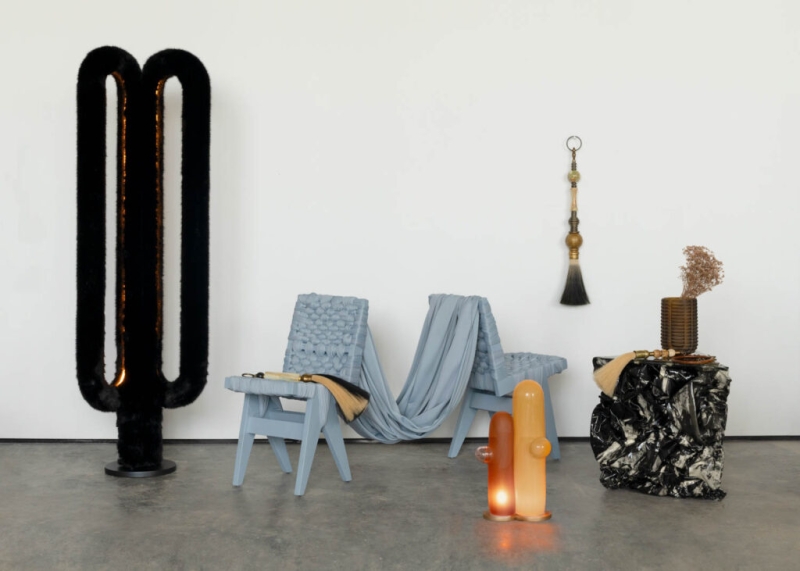Contents
- 1 Interior Design: What led the museum to host a conversation centered on queer design at this moment in time?
- 2 ID: In your view, what are some prominent examples of queer narratives reflected in design?
- 3 ID: The Leslie Lohman Museum of Art offers a vital look at lesser-known aspects of queer history. How does design factor into this account?
- 4 ID: In the last few years, I’ve heard artists and designers talk about the “queering of design,” in terms of mixing mediums and moving beyond binaries. Do you feel your work speaks to this idea and, if so, in what ways?
- 5 Explore Queer Designs Featured in “Design Dysphoria,” Co-curated by Liz Collins and Hosted in Studio S II in Bushwick, Brooklyn
“Design Dysphoria,” which was on view during NYCxDESIGN 2024, explored queer design through various objects.
What distinguishes queer design? Earlier this summer, The Leslie-Lohman Museum of Art in Manhattan, a space dedicated to preserving LGBTQIA+ history, teamed up with legacy paint brand Farrow & Ball to delve into this concept. The queering of design is not new, of course, but more prominent visibility for these forms is cause for celebration. In the decades since the museum’s founding, which traces back to a SoHo loft exhibit hosted by its founders in 1969, the demand and interest in works by queer designers is stronger than ever.
Capping off Pride month, multimedia artist and designer, Liz Collins; fashion designer, Christopher John Rogers; Leslie-Lohman executive director, Alyssa Nitchun; and Editor in Chief of Elle Decor, Asad Syrkett, gathered at the museum for a conversation that centered on queerness and design. Following the talk, Nitchun and Collins, who also co-curated the “Design Dysphoria” show held in a Bushwick studio during the NYCxDESIGN Festival this year, shared their thoughts on what makes queer design stand out with Interior Design.
Interior Design: What led the museum to host a conversation centered on queer design at this moment in time?
Alyssa Nitchun: Our friend Jesse Smiley introduced us to Farrow & Ball to makeover our offices—it was a love match. They were joined in supporting us by queer designers and queer-led design brands. This led to some fascinating conversations and we thought it would be valuable to bring together some of the folks involved to have a public conversation around the notion of queer design.
ID: In your view, what are some prominent examples of queer narratives reflected in design?
AN: If a designer is queer, I’d argue that inherently a kind of queerness is reflected in their work by virtue of their personal experience of holding that identity in the world. Queerness functions as a political and ideological framework alongside sexuality, gender, and desire and those intersections play out within design. Queerness is in the eye of the beholder.
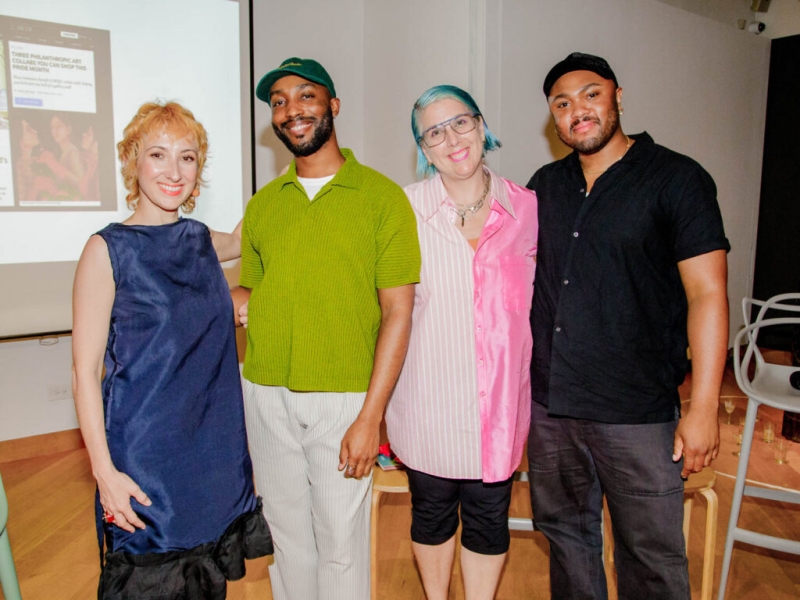
Panelists for the queer design discussion hosted by The Lesie-Lohman Museum of Art and Farrow & Ball: Alyssa Nitchun, Asad Syrkett, Liz Collins, and Christopher John Rogers. Photography courtesy of The Leslie-Lohman Museum of Art.
ID: The Leslie Lohman Museum of Art offers a vital look at lesser-known aspects of queer history. How does design factor into this account?
AN: Working in a queer art museum, I’m all too frequently reminded of how queer history is marked by omissions and erasures. Leslie-Lohman offers a history—both from the past but also the history we make on a daily basis—of queer creativity in action. Design meets at the crossroads of creativity and functionality, offering us a different way to engage and to perceive, an opportunity to queer space. Historically we’ve originated several design oriented exhibitions. We were the originating institution of the exhibition “Queer Threads,” with that catalogue edited and design by Todd Oldham, the show has toured for 10 years. The show included twenty-four artists from around the world who use thread-based craft materials and techniques to examine the diversity queer experiences. In the exhibition “On Our Backs,” the installation involved art within a peep show architecture and a bedroom, design and desire inextricably entwined. And the exhibition “Omniscient” featured a rug by Liz Collins.
ID: In the last few years, I’ve heard artists and designers talk about the “queering of design,” in terms of mixing mediums and moving beyond binaries. Do you feel your work speaks to this idea and, if so, in what ways?
Liz Collins: I work fluidly between art and design in a feedback loop and am always pushing against the compartmentalization of the two areas. The fabrics I design and produce with textile mills are a bridge, functioning as upholstery as well as base canvas for my paintings. Creating environments that function as social space in queer focused contexts with queer collaborators, I use interior design strategies to build worlds that give a feeling of comfort, pleasure, and celebration of queer community and life as we know it and want it to be.
Explore Queer Designs Featured in “Design Dysphoria,” Co-curated by Liz Collins and Hosted in Studio S II in Bushwick, Brooklyn
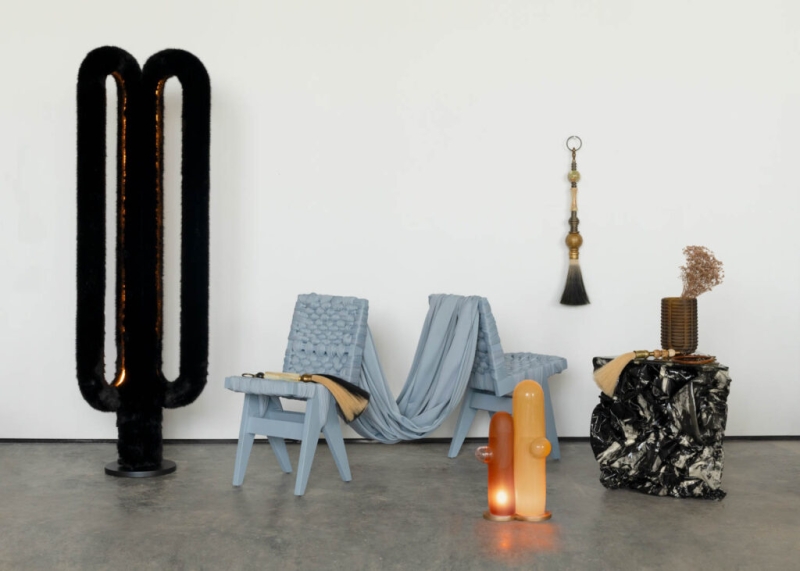
“Design Dysphoria,” which was on view during the 2024 NYCxDESIGN Festival, explored queer design through various objects. Photography by M. Cooper.
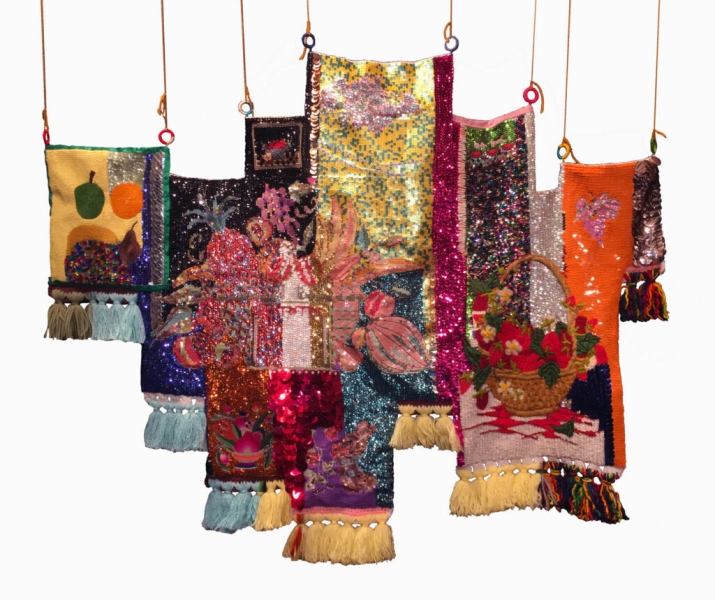
Larry Krone’s Then And Now (Fruit), 2019, made of sequins and shells on found embroidery projects, fabric, embroidery floss, and yarn.
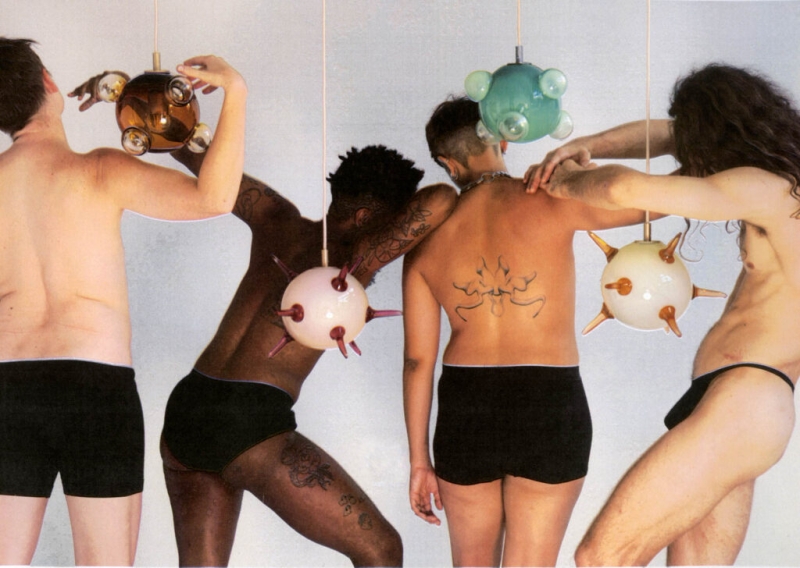
Grace Whiteside’s Pokie pendant, 2024, made of handblown glass, brass, and cloth cord. Photography courtesy of Grace Whiteside.
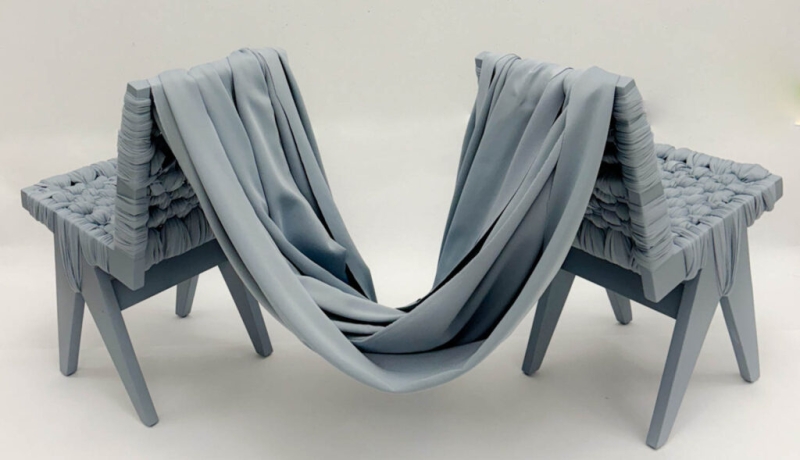
Claudia’s Chairs, 2023, 1st Edition developed with Crina Architecture. Original Concept by Liz Collins & Harry Allen. The work is made of polyester knit jersey, and wood. Photography courtesy of Liz Collins.
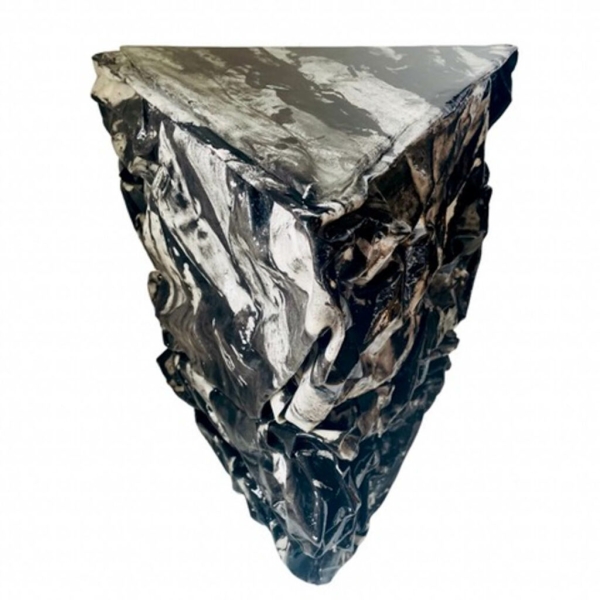
Jeremy Martin’s Beyond Nero Pedestal, 2022. Watercolor sculpture cast in resin.
